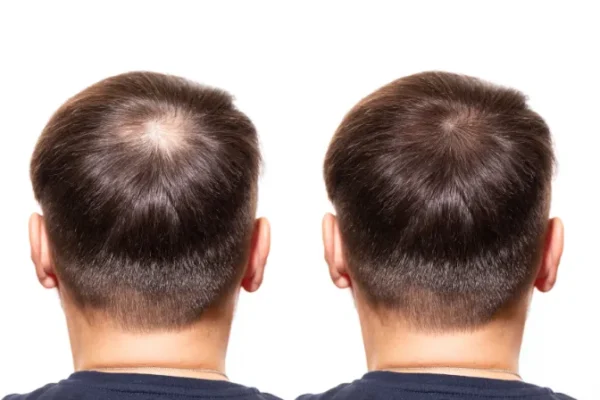Elite Hair Centers
We know that choosing a hair restoration provider is an important decision. At Elite Hair Centers, our unique dermatology and plastic surgery team is dedicated to delivering exceptional results with expertise and passion. This is what sets us apart from the competition.
Minoxidil
TOPICAL
Minoxidil, in topical form, is one of the most commonly used treatments for hair loss. Available without a prescription, it comes in concentrations of 2% and 5% in both solution and foam forms. The 5% concentration is recommended for both men and women, as it is more effective than the 2% solution.
Minoxidil promotes hair growth by extending the anagen growth phase, shortening the telogen resting phase, and enlarging miniaturized follicles. Although the exact mechanism is not entirely clear, minoxidil is a vasodilator, and the induction of vascular endothelial growth factor (VEGF) may promote the vascularity and size of dermal papillae, which correlates with hair shaft growth and size.
In a large randomized, double-blind, placebo-controlled study involving 393 men with androgenetic alopecia, 5% minoxidil applied twice daily was significantly more effective than placebo (and 2% minoxidil) in promoting hair regrowth. After 48 weeks of treatment, 57% of men in the 5% minoxidil group experienced hair regrowth, compared to 41% in the 2% minoxidil group and 23% in the placebo group.
Another randomized, double-blind, placebo-controlled study with 381 women demonstrated that both 2% and 5% minoxidil were effective in promoting hair regrowth in women with androgenetic alopecia when compared with placebo.
Minoxidil is generally considered safe and well-tolerated. However, some common side effects include scalp irritation, itching, and dryness. The foam formulation is preferred by some, as it lacks propylene glycol, which can cause irritation in certain individuals.
It is important to note that the effectiveness of minoxidil varies depending on the individual and the severity of their hair loss. It may take several months of consistent use before results are noticeable, and hair regrowth may not occur in all individuals. Additionally, minoxidil must be used continuously to maintain results.


summary
- Topical minoxidil is an FDA-approved, over-the-counter treatment for male and female pattern hair loss.
- Studies demonstrate a moderate improvement in hair thickening and hair loss prevention.
- The 5% concentration can be used by both men and women, but men should use it twice daily.
- There is no difference between the solution and foam in terms of efficacy, but some may find the foam less irritating.
- Aside from irritation, it is considered a safe and well-tolerated medication; some will experience shedding within the first 1-2 months, but this subsides on its own.
- Continuous use is required to maintain benefits.
ORAL
Oral minoxidil has been used for decades to treat high blood pressure. Patients being treated for blood pressure noticed increased hair growth, which led to the development of a topical preparation. However, low-dose oral minoxidil has been used specifically for treating hair loss and is effective in treating androgenetic alopecia, as well as several other types of hair loss.
A recent meta-analysis, including 17 studies with 634 patients, demonstrates that low-dose oral minoxidil can be an effective and well-tolerated alternative for healthy patients who have difficulty with or do not respond adequately to topical formulations. The dose range is from 0.25 mg per day up to 2.5 mg per day. Side effects are generally mild and dose-dependent. The most common side effect is hypertrichosis (increased hair growth outside of the scalp, occurring in 10-20% of patients), but most patients did not find this bothersome enough to stop the medication. Generally, there is no significant change in blood pressure; however, some patients (less than 10%) may experience an increased heart rate, dizziness upon standing, and lower leg swelling. For the appropriate patient, low-dose oral minoxidil can be an effective treatment to promote hair regrowth.

FAQS
What is minoxidil?
Minoxidil is a medication available as a treatment primarily for androgenetic alopecia (male or female pattern hair loss), although it can be used for other types of hair loss as well. It comes in various topical formulations, as well as, an oral pill.
How does minoxidil work for hair loss?
The exact mechanism of action of minoxidil is not fully understood. However, it is believed to promote hair growth by stimulating hair follicles, increasing blood flow to the scalp, and extending the growth phase of the hair cycle.
Who is a suitable candidate for minoxidil?
Minoxidil is suitable for both men and women experiencing male or female pattern hair loss. It can be used in cases of mild to moderate hair thinning. It is generally not recommended for individuals with a receding hairline or complete baldness. A consultation can help determine if the topical for oral formulation is best for you.
How long does it take to see results from minoxidil?
Results from minoxidil can vary among individuals. Some people may start to see improvements in hair growth and thickness within a few months of consistent use. However, it may take up to six months or more to observe noticeable changes. Continuous use is essential to maintain the results.
Can minoxidil be used in combination with other hair loss treatments?
Yes, minoxidil can be used in combination with other hair loss treatments, such as finasteride or low-level laser therapy, to potentially enhance the outcomes. Combining therapies may provide synergistic effects and address hair loss from different angles. Consultation can help determine the most suitable treatment plan for your specific needs.
Are there any potential side effects of minoxidil?
Common side effects of minoxidil may include scalp irritation, dryness, itching, or flaking for the topical formulation, and orthostatic hypotension and leg swelling for the oral formulation. These side effects are usually mild and resolve on their own, or with dose reduction. Occasionally, minoxidil may cause unwanted hair growth on other parts of the body.
Is minoxidil a permanent solution for hair loss?
Minoxidil is not a permanent solution for hair loss. It is a maintenance treatment that needs to be continued long-term to sustain the results. If minoxidil is discontinued, the benefits may gradually diminish, and hair loss will resume.

Before & After Gallery
*Individual results may vary.
TESTIMONIALS
REFERENCES
Olsen EA, Dunlap FE, Funicella T, Koperski JA, Swinehart JM, Tschen EH, Trancik RJ. A randomized clinical trial of 5% topical minoxidil versus 2% topical minoxidil and placebo in the treatment of androgenetic alopecia in men. J Am Acad Dermatol. 2002 Sep;47(3):377-85. doi: 10.1067/mjd.2002.124088. PMID: 12196747.
Lucky AW, Piacquadio DJ, Ditre CM, Dunlap F, Kantor I, Pandya AG, Savin RC, Tharp MD. A randomized, placebo-controlled trial of 5% and 2% topical minoxidil solutions in the treatment of female pattern hair loss. J Am Acad Dermatol. 2004 Apr;50(4):541-53. doi: 10.1016/j.jaad.2003.06.014. PMID: 15034503.
Randolph M, Tosti A. Oral minoxidil treatment for hair loss: A review of efficacy and safety. J Am Acad Dermatol. 2021 Mar;84(3):737-746. doi: 10.1016/j.jaad.2020.06.1009. Epub 2020 Jul 2. PMID: 32622136.

